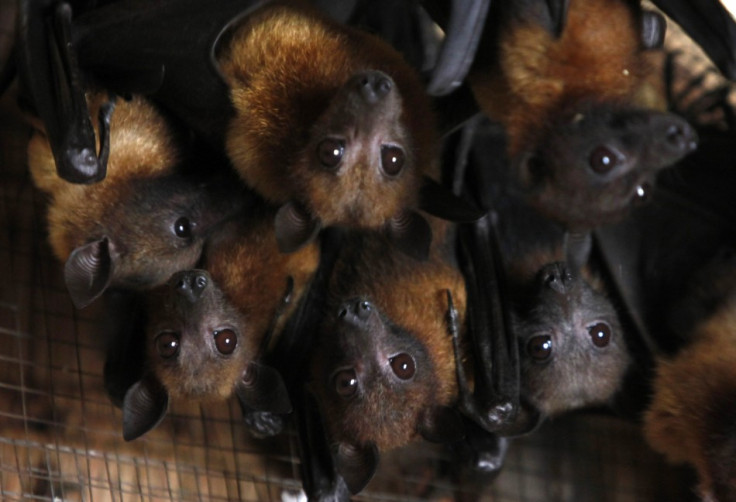White-Nose Syndrome: Deadly Bat-Killing Fungus Came From Europe

A deadly fungal disease that has killed at least 5.7 million bats in the United States and Canada in just a few years, was likely to have been caused by an invasive pathogen from Europe, scientists have found.
White-Nose syndrome, a disease that was caused by an infected fungus, Geomyces destructans (Gd), was first observed to be killing bats in a cave in upstate New York in 2006. Since then at least 5.7 million bats have been killed in the United States and Canada. The disease has not posed any threat to humans, reported the Associated Press.
Scientists have now found evidence that suggests the infected fungus Gd has travelled from Europe to North America on a human shoe.
"Before we can even know whether a solution is possible, we have to know what the disease is doing and where it came from," Discovery News quoted Craig Willis, a wildlife biologist at the University of Winnipeg in Canada, as saying.
"For that reason, we have an obligation to figure out what is going on, to invest in understanding it, and to do our best to try and fix it or at least make it not as bad as possible," he added.
To study about the mysterious death of the bats, Craig Wills and his colleagues collected 54 hibernating healthy little brown bats (Myotis lucifugus) from a cave in Manitoba and transported them to a facility at the University of Saskatchewan.
The researchers put Gd fungi that had been isolated from North America on the wings of one group of bats. They put European Gd fungi on another group. Finally they put fungus-free liquid on a third group.
They placed the bats in incubators to observe them. The experts found that the two groups of bats on which the infected fungi were put started developing lesions on their wings and traces of white powder on the nose that gives the disease its name.
Some of the bats infected with the European fungus began to die within 70 days. By day 90, some of those with the North American fungus also died, showing for the first time that infection with the fungus alone was enough to kill the animals.
The white nose syndrome is said to kill the bats by interrupting their hibernation, and depleting the fat reserves, reported Discovery News.
Both the infected groups from North America and Europe showed severe symptoms. While the North American bats have been killed by the fungus, the European bats have possibly developed immunity to the fungus or learned to avoid places where the disease spreads.
Wills believes that tourists could have played a role in carrying the fungus from a cave in Europe to a popular cave in upstate New York, where the epidemic began. He and his team have planned to repeat the experiment next year with European bats and compare the results.
The study has been published in the Proceedings of the National Academy of Sciences.
© Copyright IBTimes 2024. All rights reserved.





